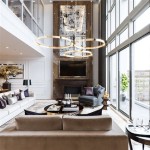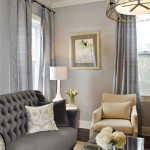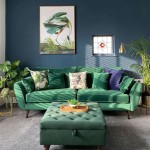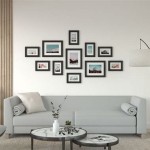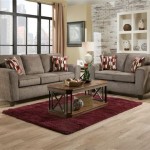Two Couch Living Room Ideas: Balancing Comfort and Style
The living room often serves as the central hub of a home, a space for relaxation, entertainment, and social interaction. Designing this space effectively requires careful consideration of furniture arrangement, particularly when incorporating two couches. The challenge lies in creating a balanced and aesthetically pleasing environment that maximizes both comfort and functionality. This article explores various strategies for successfully integrating two couches into a living room design, highlighting key considerations for space optimization, furniture selection, and style coherence. By examining different layout options, material choices, and accessory pairings, homeowners can transform their living room into a welcoming and stylish haven.
Optimizing Space with Two Couches
One of the primary concerns when incorporating two couches into a living room is maximizing the available space. Careful planning and strategic placement are essential to avoid overcrowding and ensure ease of movement. The size and shape of the room, along with the dimensions of the couches themselves, will significantly influence the layout. Furthermore, considering the room's existing architectural features, such as windows, fireplaces, and doorways, is crucial for creating a harmonious and functional design.
A common approach is to arrange the two couches facing each other, creating a symmetrical and conversational layout. This configuration works well in rectangular rooms and encourages interaction among occupants. The distance between the couches is a critical factor; it should be sufficient to allow for comfortable conversation without feeling too distant or cramped. A coffee table placed between the couches provides a central focal point and offers a convenient surface for drinks, snacks, or decorative items. Rugs can also be used to visually define the seating area and anchor the arrangement within the larger space.
In larger living rooms, an L-shaped configuration can be an effective way to define separate zones within the room. One couch can be placed along a longer wall, while the other is positioned perpendicular to it, forming an "L" shape. This layout is particularly suitable for open-concept living spaces, where it can help delineate the living room area from the dining room or kitchen. Corner tables or floor lamps can be strategically placed in the corner formed by the two couches to enhance both functionality and aesthetics.
For smaller living rooms, space-saving strategies are essential. Consider using smaller couches or loveseats instead of full-sized sofas. Opting for couches with minimalist designs and clean lines can also help create a feeling of spaciousness. Placing one couch against a wall and the other facing it, with minimal space between them, can maximize floor space while still providing ample seating. Using open shelving units instead of solid cabinets can also visually lighten the room and prevent it from feeling cluttered.
Regardless of the layout chosen, it is essential to ensure that there is sufficient space for circulation. Avoid placing furniture in such a way that it obstructs doorways or walkways. Creating clear pathways throughout the living room will enhance its functionality and make it a more enjoyable space to inhabit.
Selecting the Right Couches for Cohesion
Beyond spatial considerations, the selection of the couches themselves plays a pivotal role in the overall aesthetic of the living room. Factors such as style, color, fabric, and size should be carefully considered to ensure that the two couches complement each other and contribute to a cohesive design. The goal is to create a harmonious balance between visual appeal and practical comfort.
While identical couches can create a sense of symmetry and formality, mixing and matching different styles can add visual interest and personality to the living room. When opting for different styles, it is crucial to maintain a common thread that ties the pieces together. This could be a shared color palette, a similar silhouette, or complementary textures. For example, a modern, minimalist couch could be paired with a more traditional, tufted couch, provided that they share a similar color or fabric family.
Color is a powerful tool for creating visual harmony. Using complementary colors, such as blue and orange or green and red, can create a vibrant and dynamic look. Alternatively, a monochromatic color scheme, where different shades of the same color are used, can create a more subtle and sophisticated effect. When choosing colors for the couches, consider the existing color scheme of the room, including the walls, flooring, and accessories. It is also important to consider the lighting conditions, as colors can appear different under natural and artificial light.
The fabric of the couches is another important consideration. Durable and stain-resistant fabrics, such as microfiber or leather, are ideal for households with children or pets. Natural fabrics, such as cotton or linen, offer a softer and more breathable option, but may require more maintenance. The choice of fabric should also be consistent with the overall style of the room. For example, velvet or silk fabrics can add a touch of luxury and elegance to a formal living room, while more casual fabrics, such as denim or canvas, are suitable for a relaxed and informal space.
The size of the couches should also be proportional to the size of the room. Overly large couches can overwhelm a small living room, while undersized couches can look lost in a larger space. Consider the scale of the other furniture in the room, such as the coffee table, side tables, and lamps, when selecting the size of the couches. It is also important to consider the height of the couches, as this can affect the overall visual balance of the room.
Enhancing the Ambiance with Accessories and Accents
Once the two couches are in place, the final step is to enhance the ambiance of the living room with accessories and accents. These elements can add personality, texture, and visual interest to the space, transforming it from a functional seating area into a stylish and inviting haven. The selection and placement of accessories should be carefully considered to complement the overall design and create a cohesive and harmonious look.
Throw pillows are an easy and inexpensive way to add color, texture, and pattern to the couches. Mixing and matching different sizes, shapes, and fabrics can create a visually interesting and inviting arrangement. Consider using pillows with different textures, such as velvet, linen, or faux fur, to add tactile interest. Patterns, such as stripes, florals, or geometric designs, can also add visual appeal. However, it is important to avoid overwhelming the space with too many pillows. A few well-chosen pillows can be more effective than a multitude of mismatched ones.
Throws and blankets can also add warmth and comfort to the living room. Draping a throw over the back of a couch or folding it neatly on the armrest can create a cozy and inviting atmosphere. Choose throws that complement the color and texture of the couches and pillows. Knit blankets, fleece throws, or faux fur throws can add a touch of luxury and comfort to the space.
Coffee tables and side tables are essential for providing functional surfaces for drinks, snacks, and books. The style and size of the tables should be consistent with the overall design of the room. A large coffee table placed between the two couches can serve as a central focal point, while smaller side tables can be placed next to the couches for convenience. Consider using tables with storage compartments to help keep the room organized and clutter-free.
Lighting plays a crucial role in setting the mood of the living room. A combination of ambient, task, and accent lighting can create a warm and inviting atmosphere. Floor lamps and table lamps can provide task lighting for reading or working, while recessed lighting or chandeliers can provide ambient lighting for the entire room. Accent lighting, such as spotlights or picture lights, can be used to highlight artwork or architectural features.
Artwork and decorative objects can add personality and visual interest to the living room. Choose pieces that reflect your personal style and interests. A large piece of artwork can serve as a focal point for the room, while smaller decorative objects can be arranged on shelves or tables to add visual interest. Consider using a variety of textures and materials, such as metal, wood, glass, and ceramics, to create a visually dynamic and engaging space.

How To Arrange Two Sofas In Living Room

How To Do Parallel Sofas Living Room Arrangement Local Furniture Outlet

Two Couches In The Living Room Layout Pros And Cons Design Ideas Rea
:max_bytes(150000):strip_icc()/241281900_341192554361276_4065058603327637006_n-f219b7033f0146f688d84e34f18e2bed.jpg?strip=all)
How To Arrange Two Sofas In A Living Room
:strip_icc()/cdn.cliqueinc.com__cache__posts__83156__sofa-floor-plan-83156-1541028921599-image.700x0c-ffe79f7f6df94ac98b4b64428d739810.jpg?strip=all)
The Living Room And Sofa Layout That Works Every Time

2 Separate Living Spaces Design Ideas
:strip_icc()/cdn.cliqueinc.com__cache__posts__83156__sofa-floor-plan-83156-1508554405538-main.700x0c-e9b3d6e567cc4c38801576bf39d9c8e1.jpg?strip=all)
The Living Room And Sofa Layout That Works Every Time

10 Living Room Layout Ideas Furniture Choice

One Sofa Or Two Help Me Decide Thrifty Decor Chick Diy And Organizing

53 Best Double Sofas Ideas Family Room Living Designs Design


